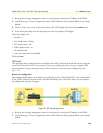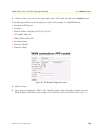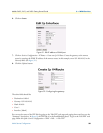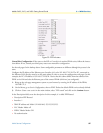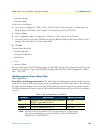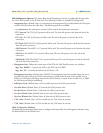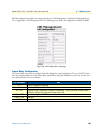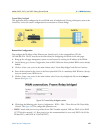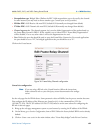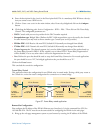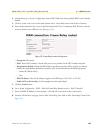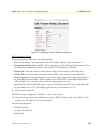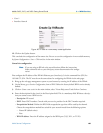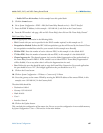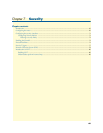
WAN Service Configuration 62
Models 2603, 2621, and 2635 Getting Started Guide 6 • WAN Services
• Encapsulation type: Bridged Ether (Defines the RFC 1490 encapsulation type to be used by the channel.
In some instances you may need to choose another type. Consult your service provider.)
• RX Max PDU: 8192 Receive side max PDU, default 8192 (normally not changed from default)
• TX Max PDU: 8192 Transmit side max PDU, default 8192(normally not changed from default)
• Channel segment size. The channel segment size is used to define fragmentation of the packets based on
the Frame Relay Forum IA FRF.12. If this variable is set to 0 then FRF.12 “Frame Relay Fragmentation”
will be disabled, if set to any other value it will set the fragmentation size used.
• Port: Defines the port that should be used to setup the Frame Relay Connection. For routed applications
the port should be set to “frf”, for bridged applications the port should be set to “fr”.
Click on the Create button.
Figure 36. Frame Relay Channel configuration
Central site configuration.
Note If you are using a IPLink at the Central location, follow the instructions
below, otherwise refer to your third party router documentation for configu-
ration.
See the web pages for the IPLink above. Some parametric values will differ, but the process remains the same.
First configure the IP address of the Ethernet port (interface ip1) via the command line (CLI) for
192.168.172.3/24. The PC (IP address 192.168.172.229) must be on the same subnet for configuring the
IPLink via the web pages.
1. Bring up the web-page management system on your browser by entering the IP address of the IPLink.
2. On the Menu, go to Services Configuration, then to WAN. Delete the factory default WAN services already
defined.
3. Click on Create a new service in the main window, select “Frame Relay bridged” and click on Continue.



